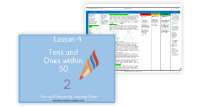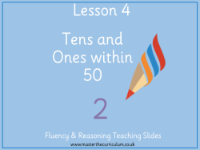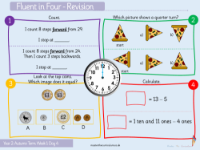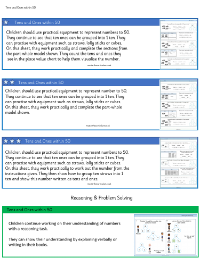Place value - Tens and ones within 50 - Planning
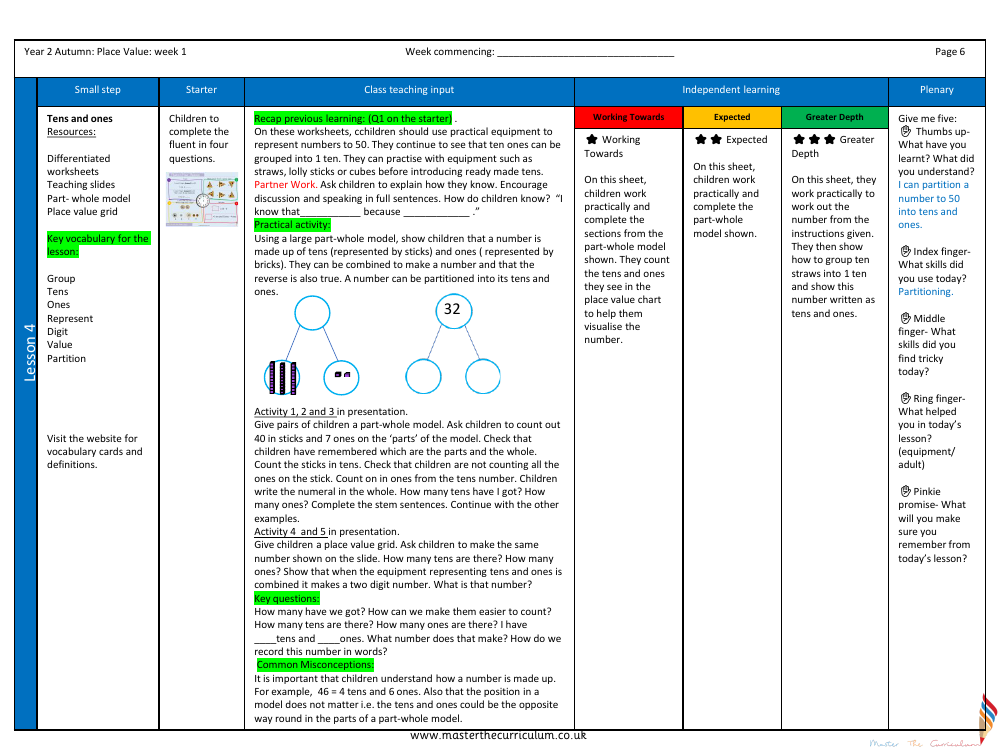
Maths Resource Description
The initial week of Year 2 Autumn term introduces the concept of place value with a focus on understanding tens and ones within the number 50. The lesson utilises a variety of resources, including differentiated worksheets, teaching slides, part-whole models, and place value grids, to engage children in learning. Key vocabulary such as 'group', 'tens', 'ones', 'represent', 'digit', 'value', and 'partition' are central to the lesson, with vocabulary cards and definitions available to support learning. The lesson begins with a review of prior knowledge, followed by hands-on activities where children use items like straws or cubes to physically represent numbers, thereby visualising the grouping of ten ones into one ten and practising the concept of partitioning.
During the class, children work in pairs with a part-whole model to combine tens (sticks) and ones (bricks) to form numbers, and then partition these numbers back into tens and ones. This process is reinforced through practical activities, such as counting out 40 in sticks and 7 in ones, and then writing the numeral in the whole part of the model. Children are encouraged to articulate their understanding by completing stem sentences and discussing in full sentences. By the end of the lesson, they should be able to partition numbers up to 50 into tens and ones, use a place value grid to represent numbers, and understand that the physical position of tens and ones in a model is not fixed. The lesson concludes with a reflective 'Give me five' activity, where children assess what they have learned, the skills they have used, and what they found challenging, ensuring they remember key concepts from the lesson. Differentiated activities cater to varying levels of understanding, from working towards the expected level to achieving greater depth in place value knowledge.
